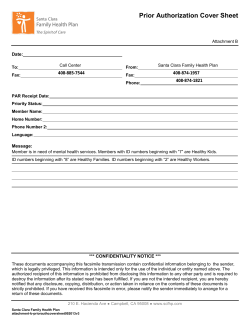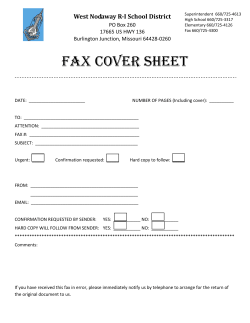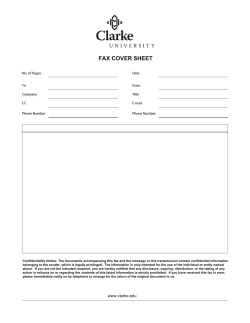
Sol
EECS 16A Spring 2015 Designing Information Devices and Systems I Discussion 9W 1. CDMA - Code division multiple access Code division multiple access (CDMA) is a channel access method used by various radio communication technologies. CDMA is an example of multiple access, which is where several transmitters can send information simultaneously over a single communication channel. This allows several users to share a band of frequencies. To permit this without undue interference between the users, CDMA employs “spreadspectrum” technology and a special coding scheme (where each transmitter is assigned a code). These codes have special properties: • Their auto-correlation with offset zero is very high and any other offset is very low. • The cross-correlation between different codes is very low. The signal to be transmitted is modulated by the CDMA code (we will cover modulation in detail later, but for now just think of the signal vector being point wise multiplied by the code vector). This modulation lets us differentiate different transmitters from each other and we will see exactly how this is done in this problem. (a) Show that the “codes” represented by these signals are orthogonal. EECS 16A, Spring 2015, Discussion 9W 1 Solution: v1 = 1 1 1 1 v2 = 1 1 −1 −1 v3 = 1 −1 −1 1 v4 = 1 −1 1 −1 v1 · v2 = 0 v2 · v3 = 0 v3 · v4 = 0 v1 · v3 = 0 v2 · v4 = 0 v1 · v4 = 0 (b) Sketch the auto-correlation of each code. Solution: v1 : v2 : v3 : EECS 16A, Spring 2015, Discussion 9W 2 v4 : (c) Sketch the cross-correlation between any two pairs of codes. Solution: 1&2 : 2&3 : EECS 16A, Spring 2015, Discussion 9W 3 (d) We now consider two senders and a single receiver. The senders want to talk at the same time. • Sender 1 uses v1 = 1 −1 to represent a 1 and −v1 = −1 1 to represent a 0. • Sender 2 uses v2 = 1 1 to represent a 1 and −v2 = −1 −1 to represent a 0. If sender 1 has data 1 0 1 0 and sender 2 has data 0 1 1 1 to send, sketch the encoding process. What would be the raw signal received at the receiver (the signals add up since they were sent at the same time). Solution: sender1 data = 1 −1 −1 1 1 −1 −1 1 sender2 data = −1 −1 1 1 1 1 1 1 received data = 0 −2 0 2 2 0 0 2 (e) If the above coding scheme was used by the senders (and they talked at the same time) and the received signal was 0 −2 −2 0 2 0 2 0 , what were the two senders trying to send? Solution: (0, −2) = av1 + bv2 (0, −2) · v1 = av1 v1 2 = 2a a=1 (0, −2) − v1 = bv2 (−1, −1) = b(−1, −1) b = −1 Extend this logic to the next three cases: (-2, 0), (2, 0), (2, 0). Solving everything yields: sender1 data = 1 −1 −1 1 1 −1 1 −1 sender2 data = −1 −1 −1 −1 1 1 1 1 Since we know that v1 represents a 1 and −v1 represents a 0 for Sender 1, and v2 represents a 1 and −v2 represents 2, we know that Sender 1’s message is 1 0 1 1 and Sender 2’s a 0 for Sender message is 0 0 1 1 EECS 16A, Spring 2015, Discussion 9W 4 2. Applications of least-squares List some of the applications where least-squares curve fitting is used. Solution: Least-squares curve fitting is used in a variety of disciplines ranging from astronomy to economics. In economics, an example is the Cobb-Douglas Production Function, which uses least-squares curve fitting to model a function relating capital and labor to production level. Another application is something we will use in this class, in which we utilize redundancy to catch errors in our signal system. EECS 16A, Spring 2015, Discussion 9W 5
© Copyright 2025










